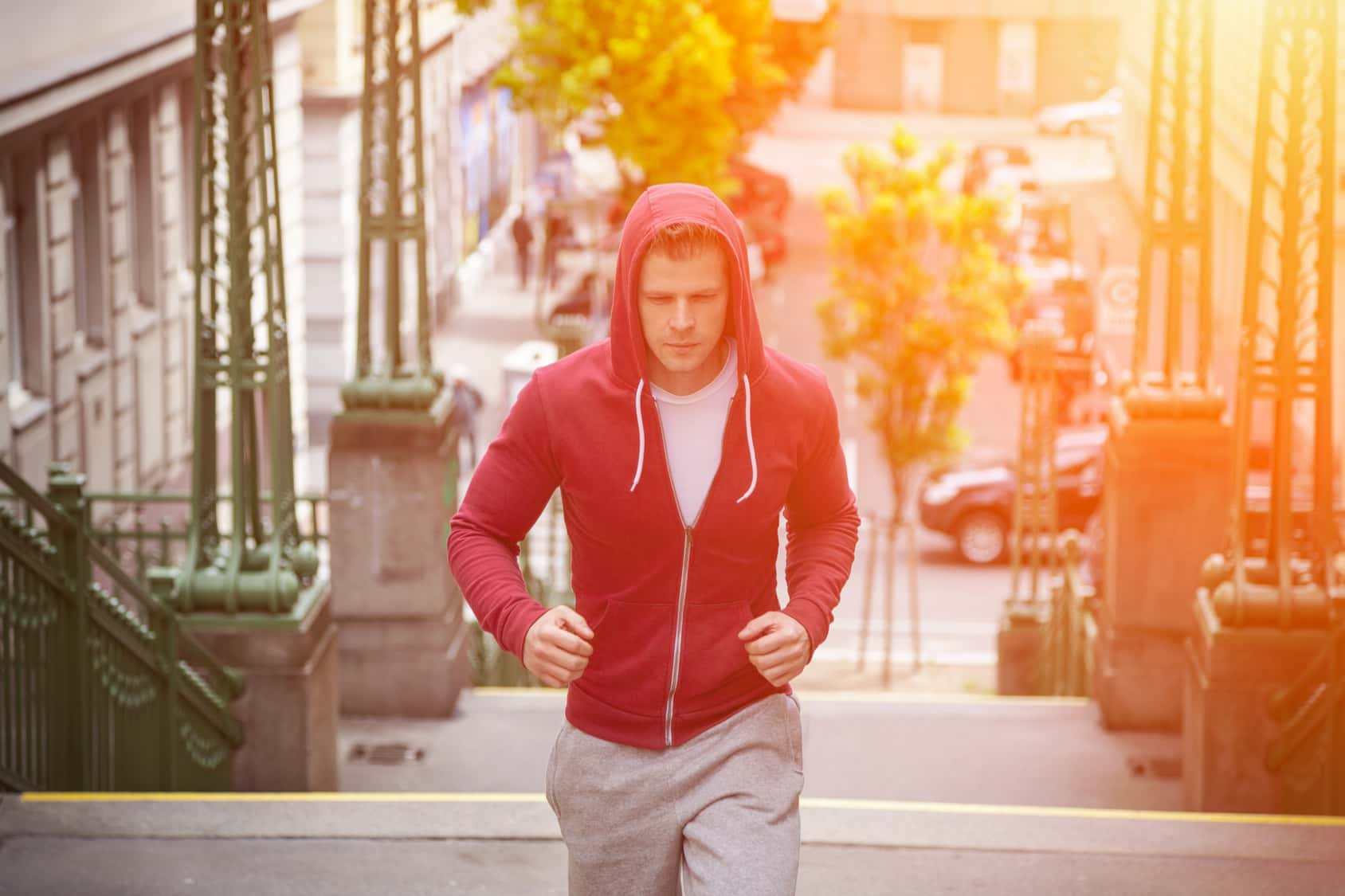Are you gearing up for a run but worried about the scorching heat? Well, you’ve come to the right spot!
You’re ready to hit the pavement or trail, the sun’s high, and temperatures are soaring. This is when knowing how to dodge heatstroke becomes crucial for every runner.
Today, we’re not just talking about heatstroke – we’re tackling it head-on. I’ll guide you through recognizing its sneaky signs, share top-notch strategies to prevent it, and reveal how you can still relish your runs under the fiery sun.
Sounds like a good idea?
Then let’s get started.
Understanding Heatstroke In Runners
Heatstroke isn’t just a runner’s concern; it’s a critical medical emergency that demands immediate attention.
When the body’s internal thermostat goes haywire, unable to regulate its temperature, things get serious.
Normally, your body cools itself through sweating. However, in extreme heat or vigorous exercise, this system can falter, leading to an alarming rise in internal temperature. That’s heatstroke in a nutshell, and it occurs when your body temperature soars to 104°F (40°C) or higher.
Symptoms to Keep on Your Radar:
Here are the the red flags to pay attention to:
- Elevated Core Body Temperature: This isn’t just feeling a bit warm; it’s your body’s core temperature skyrocketing to 104°F (40°C) or more.
- Altered Mental State: Experiencing severe symptoms like agitation, slurred speech, delirium, and even the extremes of seizures or coma.
- Nausea and Vomiting: These are beyond discomfort; they’re red flags signaling your body’s distress under extreme temperatures.
- Rapid Heartbeat and Breathing: This is your heart and lungs working overtime, struggling to cool down your overheated body.
- Flushed Skin: Unlike heat exhaustion, where skin might be moist, in heatstroke, your skin could turn hot and dry.
How To Prevent Heat Stroke When Running
When it comes to conquering the scorching heat and keeping heat-related issues at bay, prevention is the secret weapon.
After all, prevention is better than cure and all that.
So, let’s dive into the measures you need to take to protect yourself from the dreaded heatstroke during your hot-weather runs.
Stay Hydrated
Staying hydrated is crucial, not just for peak performance, but for keeping heat-related troubles at a distance.
Here’s how to stay well hydrated.
- Start your run with a good hydration base. Down 8 to 12 ounces of water before you step out. This pre-run ritual is like setting the stage for a successful, hydrated run.
- For longer runs (anything above one hour), adopt a ‘sip and go’ strategy. Take small sips every 10 to 15 minutes. This keeps your hydration level top-notch.
- Check your weight before and after your run to measure fluid loss. Replenish with 16 ounces for every pound lost.
- Don’t wait until you’re thirsty. Thirst is a late sign of dehydration. Keep an eye on subtle hints like a higher-than-usual heart rate at rest, and urine that’s more ‘amber treasure’ than ‘clear spring’.
Check The Heat Index
The heat index blends air temperature with humidity to give you the real scoop on what you’re facing outside. Think of it as your weather guru. It’s not just about the temperature you see on the thermometer; it’s about how that temperature feels when you factor in humidity.
Here’s the deal: the higher the heat index, the hotter and more oppressive it feels. Imagine it’s 90 degrees outside, but with 70% humidity. According to the heat index, it feels like an overwhelming 110 degrees!
Also, don’t forget to factor in air pollution. When the air quality dips, you’ll feel like you’re logging the miles through a dense, dirty fog. It makes breathing harder, which can quickly turn your run into a struggle.
So what should you do when weather conditions are not conducive for safe training?
I’d recommend switching switch to a treadmill session or cross-training.
Remember, I’m not suggesting that you should give up on your passion for running; It’s about playing it smart to avoid a potential health crisis.
Dress Right
In hot weather, your running clothes need to be both durable and smart. This is where high-performance fabrics come into play. They’re engineered to wick moisture away from your skin, helping you stay dry and comfortable.
Key players in this category include Drymax, Coloma, Smartwool, and polypropylene. These fabrics are more than just material; they’re designed to handle intense workouts and keep you feeling fresh.
What’s more?
I’d recommend loose and breathable clothing. Tight-fitting attire can limit air movement and retain heat, which is undesirable in high temperatures. Opt for garments that are loose enough to allow airflow and help keep you cool.
Color choice is also important in managing heat. Choose whites, pastels, or other light shades to help keep the heat at bay. Darker colors are better suited for cooler conditions as they can make you feel hotter during warm-weather runs.
Protect Your Head
You won’t never catch me outside running without my running hat. It’s not just a fashion accessory; it’s a functional piece of gear that provides critical protection from the sun’s UV rays. A running hat shields your face and eyes, reducing the risk of sunburn and long-term eye damage like cataracts.
On trails, a running hat can also be practical for keeping insects and spider webs away from your face, enhancing your outdoor experience.
Prefer a lighter option? Then I’d recommend a running visor. It offers the same benefits for shielding your face from the sun while allowing more airflow to your head, keeping you cooler.
Be Patient
Adapting to running in hot weather requires patience. Your body needs time to acclimate to the higher temperatures, a process that typically takes about two weeks.
During heat acclimatization, your body undergoes several changes. You might notice a decrease in your heart rate during runs, a reduction in your core body temperature, and an increase in your sweat rate. These changes help your body to better cope with the heat.
So, instead of diving straight into your usual running routine, ease into it. For the first few weeks, consider reducing your running distance or intensity.
Pay Attention to Your Body
Running in the heat requires you to be acutely aware of your body’s signals. So, as a rule of thumb, build the habit of paying attention to how your body feels and responds during your summer runs. Here are some key signs to be aware of:
- Are you breathing more heavily than usual?
- Is your heart rate unusually high?
- Are you sweating excessively?
- Do you have a persistent headache?
- Does your skin look unusually red or pale?
- Are you feeling nauseous?
- Does your skin feel unusually warm and dry?
- Are you experiencing extreme thirst?
- Are you facing any gastrointestinal discomfort?
- Do you feel confused or disoriented?
- Are you vomiting?
- Have you experienced fainting or dizziness?
If you notice any of these symptoms, it’s important to stop running immediately. Seek a cool, shaded area to rest and drink plenty of water.
If you have a pre-existing condition that increases your susceptibility to heat-related issues, consider running with a partner or group. Having someone with you who understands your condition and can offer assistance is beneficial.
Remember, you know your body best. By being mindful of these symptoms and taking appropriate action, you can manage your runs safely even in hot weather.
Stay aware and stay safe.










